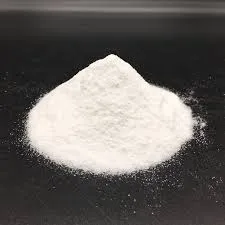
Nov . 11, 2024 18:58 Back to list
latex bonding agent
Understanding Latex Bonding Agents An Overview
Latex bonding agents have gained significant traction in various industries, ranging from construction to arts and crafts, thanks to their versatile properties and applications. These agents are primarily water-based adhesives made using a synthetic or natural latex compound. They serve not only as bonding agents but also enhance flexibility, durability, and resistance to moisture, making them suitable for a diverse range of materials.
Composition and Properties
Latex bonding agents typically consist of polymers such as polyvinyl acetate (PVA), styrene-butadiene rubber (SBR), or acrylic latex. The choice of polymer affects the agent's performance characteristics, such as adhesion strength, drying time, and elasticity. Most latex bonding agents dry clear, making them aesthetically appealing for crafts and repairs.
The primary feature of latex bonding agents is their ability to create a strong bond between different substrates. Whether it's adhering wood, fabric, ceramics, or paper, these agents deliver reliable results. They can also provide flexibility; this is especially beneficial in applications where materials may expand or contract due to changes in temperature or humidity.
Moreover, latex bonding agents are generally non-toxic and have low volatile organic compounds (VOCs), making them a safer choice for both indoor and outdoor applications. Their water-based nature allows for easy cleanup with soap and water before they dry, an added advantage for both professionals and DIY enthusiasts.
Applications
latex bonding agent

1. Construction and Renovation In the construction industry, latex bonding agents are widely utilized in tile installations, cement mixtures, and repairs. They enhance the bond of mortar to substrates, improving the strength and durability of structures. These bonding agents are also used in self-leveling compounds and underlayment materials to create superior adhesion.
2. Arts and Crafts For artists and crafters, latex bonding agents serve as adhesives for a wide variety of materials. They are employed in projects that involve paper, fabric, and even small decorative items. The flexibility and quick drying time make them ideal for scrapbooking, collage, and fabric crafts, ensuring that finished projects have a professional and polished appearance.
3. Woodworking In woodworking, latex bonding agents are favored for their strong adhesion while allowing for some movement in wood joints. They are excellent for edge gluing and laminating and are often used in furniture making and cabinetry. These agents can withstand stress and provide long-lasting bonds necessary for furniture durability.
4. Educational Uses Latex bonding agents are also commonly found in educational settings, particularly in schools for art projects. Their non-toxic nature makes them safe for children, allowing educators to incorporate hands-on activities without the worry of harmful chemicals.
Conclusion
In summary, latex bonding agents are a vital tool across a multitude of sectors. Their unique composition allows for strong adhesion, flexibility, and a low environmental impact, positioning them as a preferred choice in today's adhesive industry. Whether for construction purposes, artistic endeavors, or everyday repairs, latex bonding agents offer a reliable solution for diverse bonding needs. As technology continues to evolve, we can anticipate further advancements in the formulations of these agents, enhancing their performance and broadening their scope of applications. Understanding and utilizing these bonding agents can significantly improve the quality and longevity of projects, ultimately contributing to more sustainable practices in construction and crafts.
-
Unlocking the Benefits of HPMC Products: A Gateway to Versatile Applications
NewsAug.07,2025
-
Unleashing the Potential of HPMC Ashland: A Comprehensive Look
NewsAug.07,2025
-
Tile Bonding Cellulose: The Key to Superior Adhesion and Durability
NewsAug.07,2025
-
Hydroxypropyl Methylcellulose Powder: The Versatile Component in Modern Pharmaceuticals
NewsAug.07,2025
-
Hydroxyethyl Cellulose: The Versatile Solution for Various Industries
NewsAug.07,2025
-
Hydroxyethyl Cellulose (HEC): The Versatile Polymer for Various Applications
NewsAug.07,2025







